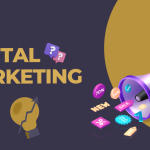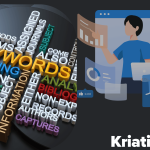Professional Scrum Product Owner-1 or PSPO-1 is a certification assessment offered by Scrum.org that assesses a product owner's knowledge of the Scrum framework and its nuances. Anyone who wants to confirm their understanding of the Scrum framework and capacity to support value creation and delivery can take the Professional Scrum Product OwnerTM level I (PSPO I) assessment.
PSPO Overview:
Total Number of Questions: 80
Time Limit: 60 Minutes
Proctored Test: No
Format: Multiple Choice, Multiple Answer and True/False
Language: English only
Classroom Courses Required: No
Fee: USD 200 per attempt
Questions from: Scrum Guide 2020, Understanding and Applying the Scrum Framework, Managing Products and Agility
Scrum Guide: Scrum is entirely defined in the Scrum Guide by Ken Schwaber and Jeff Sutherland, the originators of Scrum. The Scrum Guide is maintained independently of any company or vendor and lives on a brand-neutral site. Click here to Download a PDF copy.
Professional Scrum Competencies is a detailed multi-focus area that Scrum.org suggests to aspiring Scrum/agile enthusiasts. These Professional Scrum Competencies were developed to aid in directing a person's personal development with Scrum. Understanding and applying the Scrum Framework is the first step in becoming proficient with Scrum, laying the groundwork for personal growth. The Product Owner, Scrum Master, and Developer members of the Scrum Team, as well as other roles within the organization, such as Agile Leaders, are subject to the competencies and underlying focus areas. Click here to link.
Notes at a Glance - Part 1:
Scrum is a framework that allows organizations to deliver value through Iterative and Incremental approaches. Scrum employs an iterative, incremental process to optimize predictability and control risk. Scrum is a lightweight framework that helps people, teams, and organizations generate value through adaptive solutions for complex problems.
Scrum doesn't provide teams with detailed instructions; instead, it guides their relationship and Interactions.
Scrum is based on Empiricism and lean thinking. Scrum employs an iterative, incremental approach to optimize predictability and control risk.
Pillars of Scrum - Transparency, Inspection and Adaptability.
Scrum Values (5) - FOCUS, OPENNESS, RESPECT, COMMITMENT and COURAGE.
A Scrum Team comprises of a Scrum master (SM), a Product Owner (PO) and the Development Team.
A Scrum team participate in Sprints - a time-capsuled event encompassing four sub- events - Sprint Planning, Daily Stand-up calls, Sprint Review and Sprint Retrospective.
A Scrum team has three artefacts - Product Backlog, Sprint Backlog and Product Increments.
The Product Backlog is a single-ordered list of everything developers need to work on, describing work to be done overall. The Product owner owns this.
The Product Backlog is not baselined. New changes should be investigated, and create new items that cover it and maybe also change some of the existing things. The Product Backlog has "just enough" details, but it's not so high-level that it can tolerate all changes.
The product backlog is a dynamic artefact.
The Product Backlog refinement is an ongoing process and requires collaboration from a variety of Stakeholders and Customers - including the Scrum Team.
The Product Backlog refinement consumes no more than 10% of the capacity of the development team.




